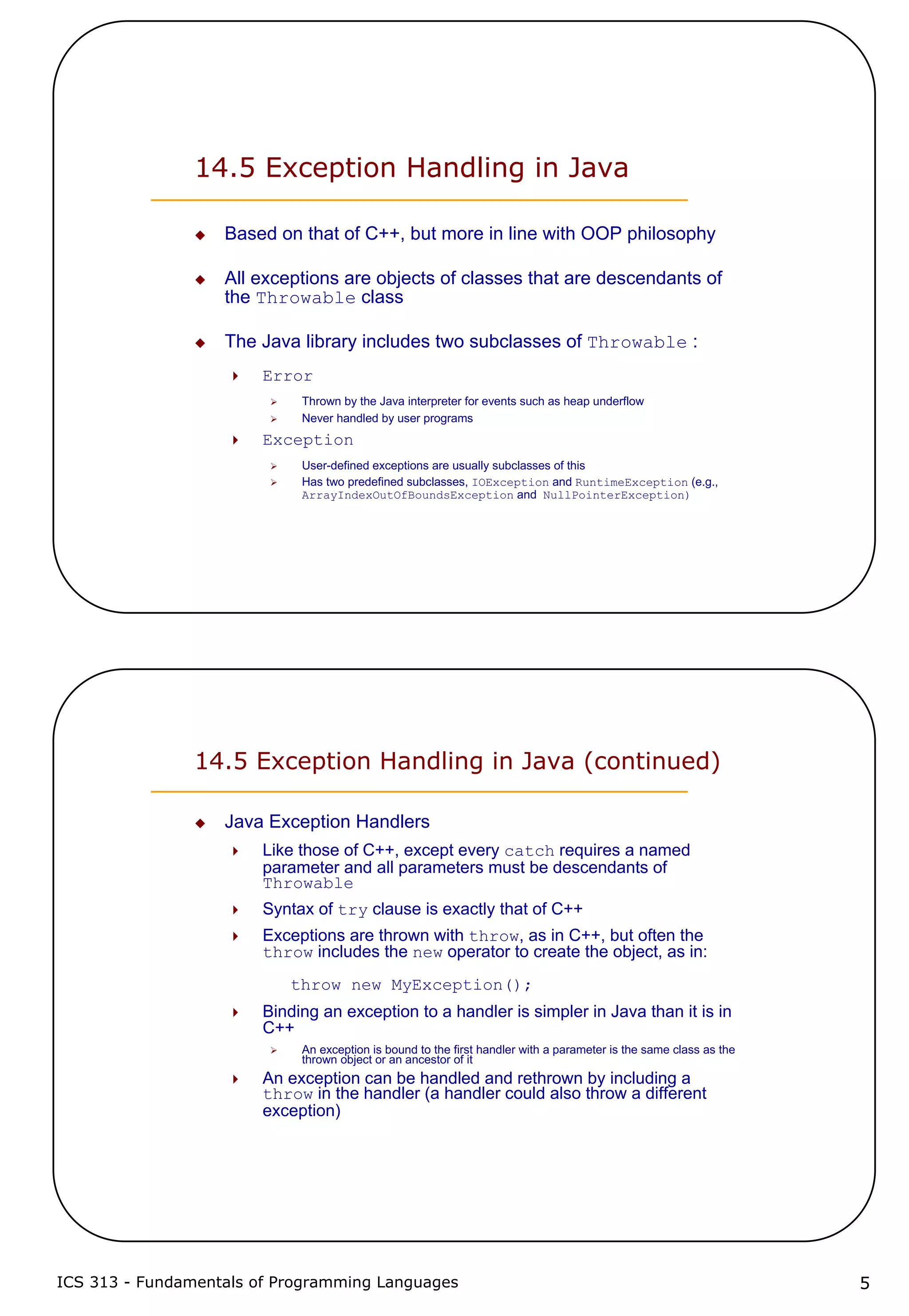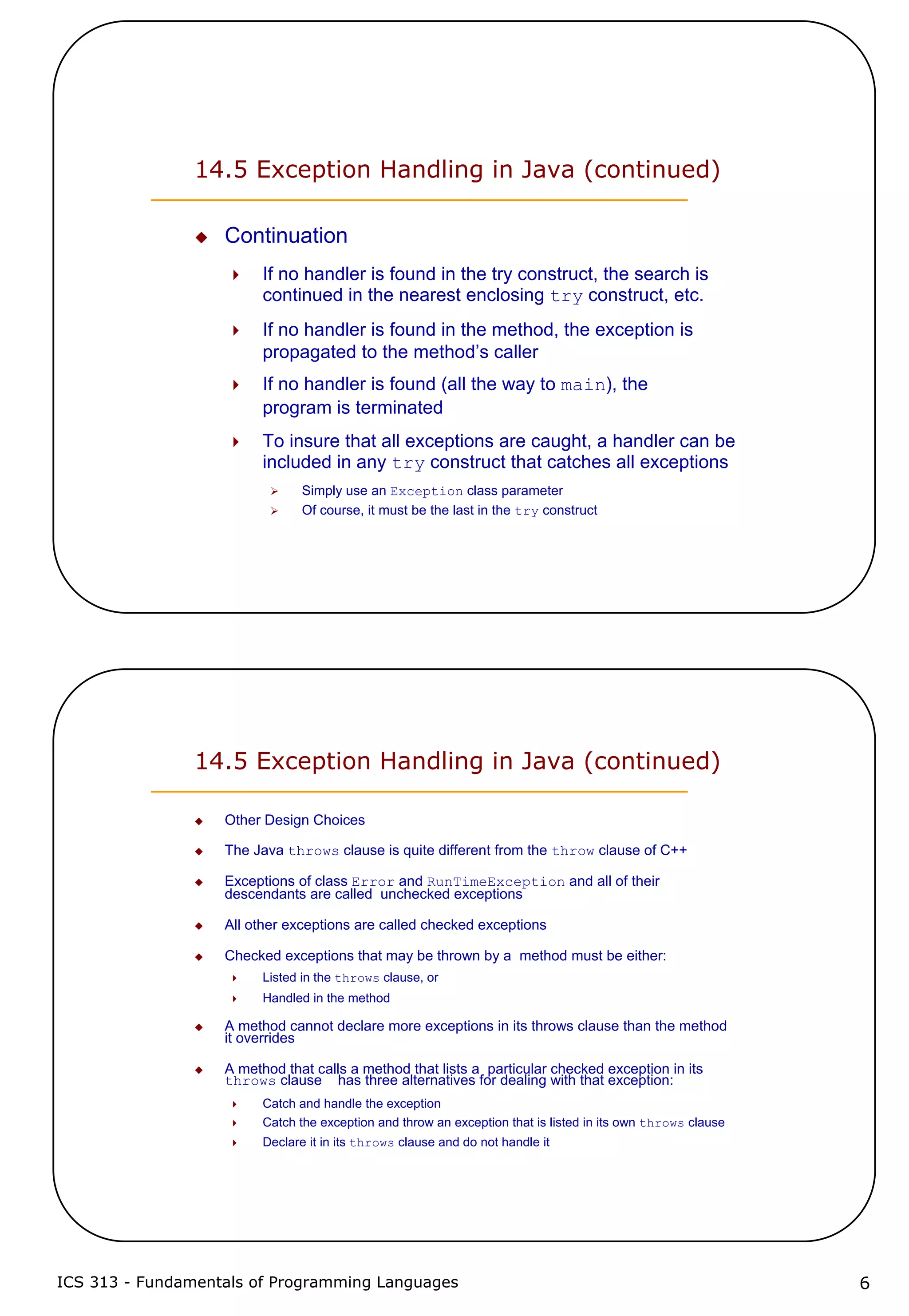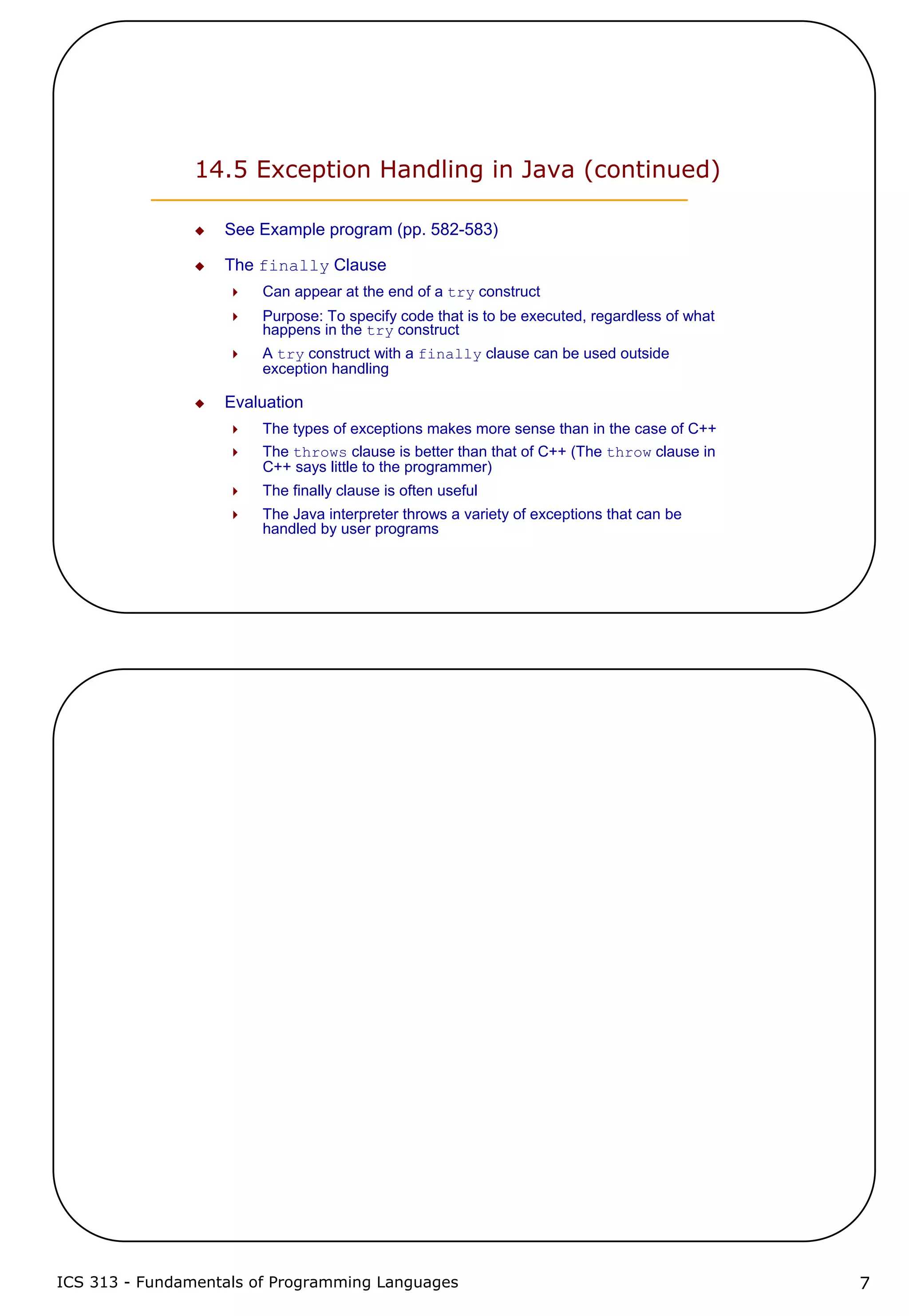The document discusses exception handling in programming languages. It begins by introducing exception handling and describing how exceptions are handled differently in languages with and without exception handling capabilities. It then covers exception handling in C++ and Java specifically. In C++, exceptions are bound to handlers through the type of a formal parameter, while in Java exceptions extend a Throwable class and are more easily bound based on class. The document also describes features like finally clauses and checked vs unchecked exceptions in Java.

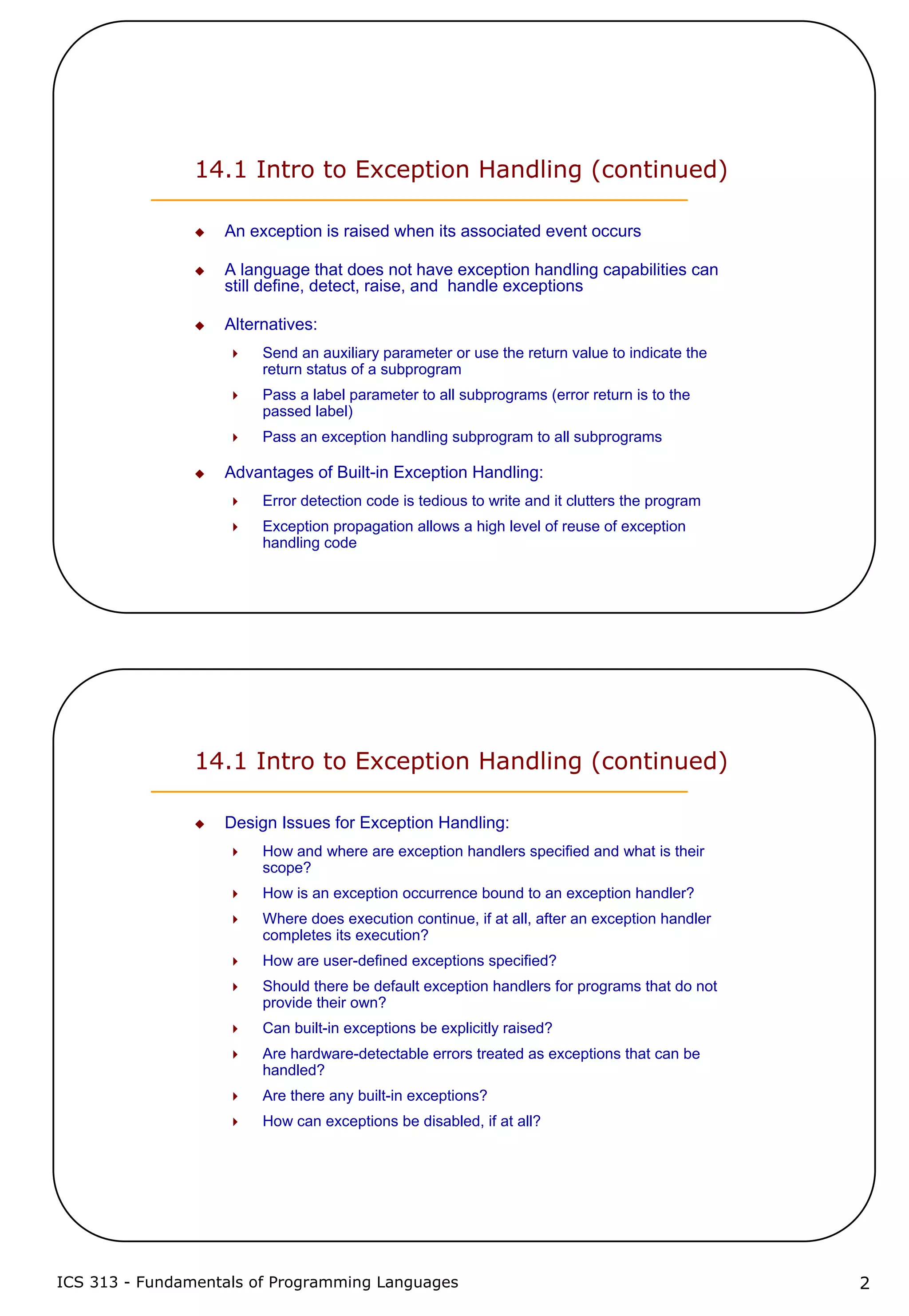
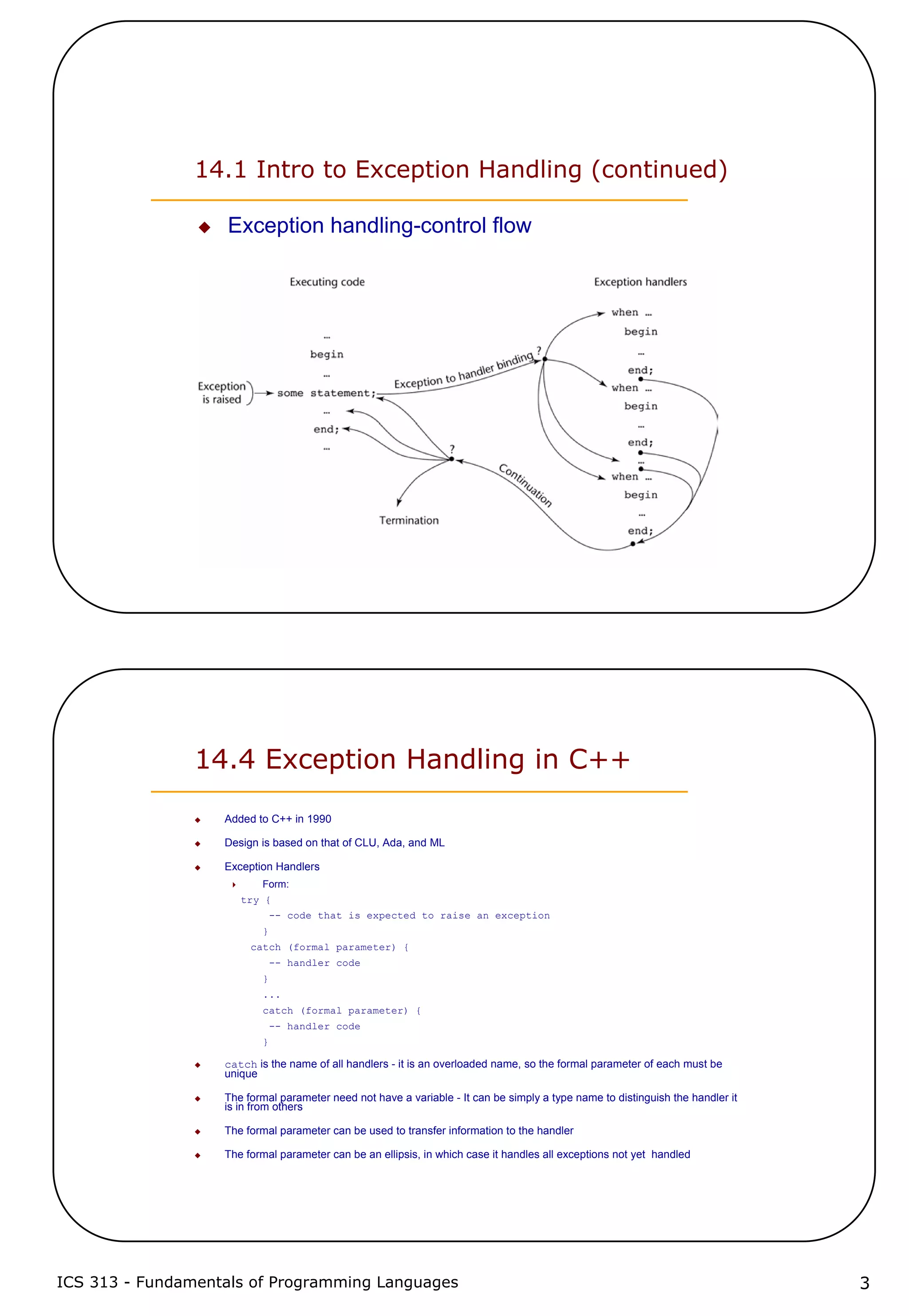
![ICS 313 - Fundamentals of Programming Languages 4
14.4 Exception Handling in C++ (continued)
Binding Exceptions to Handlers
Exceptions are all raised explicitly by the statement:
throw [expression];
The brackets are metasymbols
A throw without an operand can only appear in a handler;
when it appears, it simply reraises the exception, which is then
handled elsewhere
The type of the expression disambiguates the intended handler
Unhandled exceptions are propagated to the caller of the
function in which it is raised
This propagation continues to the main function
If no handler is found, the program is terminated
14.4 Exception Handling in C++ (continued)
Continuation
After a handler completes its execution, control flows to the first statement
after the last handler in the sequence of handlers of which it is an element
Other Design Choices
All exceptions are user-defined
Exceptions are neither specified nor declared
Functions can list the exceptions they may raise - Without a specification,
a function can raise any exception (the throw clause)
See program listing (pp. 577-578)
Evaluation
It is odd that exceptions are not named and that hardware- and system
software-detectable exceptions cannot be handled
Binding exceptions to handlers through the type of the parameter certainly
does not promote readability](https://image.slidesharecdn.com/14-exceptionhandling-130616235527-phpapp01/75/14-exception-handling-4-2048.jpg)
